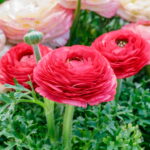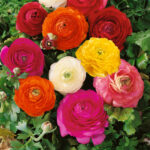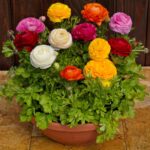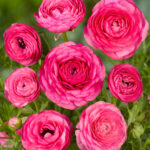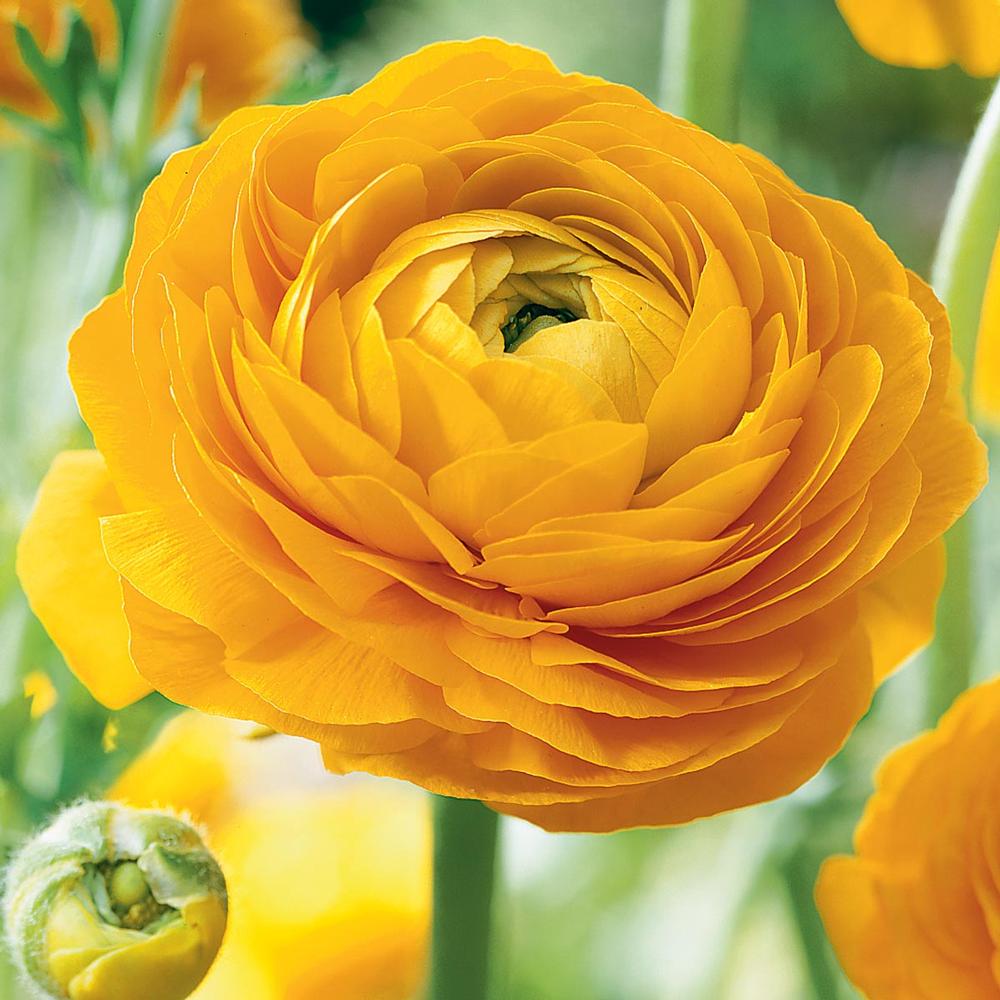
The flower name ranunculus comes from the Latin words ‘Rana,’ which means frog, and ‘unculus,’ which means little. But no one calls these flowers little frogs today. You probably know them as buttercups.
What Is a Ranunculus?
Ranunculus grown in gardens or purchased as cut flowers are usually varieties of Ranunculus asiaticus, also known as Persian buttercups. The original species is native to southeastern Europe and parts of Asia.
Types of Ranunculus
Ranunculus colors range from white to red, pink, yellow and orange, and all shades in between. They’re considered tender bulbs, hardy in U.S. Department of Agriculture Plant Hardiness Zones 8 through 10.
For those in USDA Zones 7 and colder, ranunculus are grown as cool season annuals because they go dormant in temperatures hotter than 75 degrees. The bulbs — actually tubers — can be dug up once dormant and stored for re-planting the following spring.
Depending on the variety, ranunculus can range from one to two feet high. Taller ranunculus may need to be staked or secured, because their big, rose-like flowers can be prone to flopping.
How To Plant Ranunculus
Where ranunculus are hardy
If you live in Zones 8 through 10, plant ranunculus tubers in the ground in the fall. Choose a location with full sun and well-drained soil.
When you first buy the tubers, they’ll look dry and shriveled. Some say they resemble tiny octopuses or the claws of a bird. Soak them for a few hours in room temperature water and they’ll plump up and be ready to plant outside. Plant about two inches deep with the claws pointing down, about three to six inches apart.
If you pre-soaked the tubers, they should sprout in a few days and bloom in approximately 90 days.
Where ranunculus are not hardy
If your winters are too cold for ranunculus to survive in the ground, plant them in spring.
Decide when you want your ranunculus to bloom, then count back 90 days to determine when to plant. Before planting, soak the tubers for a few hours in room temperature water, then plant in containers or pots. Put them in a cool location where temperatures will stay above freezing, like a cold frame.
Some gardeners like to pre-sprout their ranunculus tubers before planting. To do this, soak them for a few hours, then lay them out on a flat planting tray filled half-way with clean potting soil. Cover with more potting soil and keep in a cool location. The tubers will sprout new, white roots. At that point, you can pot them up to continue to grow.
Only plant ranunculus in the ground when there is no possibility of temperatures below freezing.
How To Care for Ranunculus
Watering
Water in containers when the soil feels dry. Overwatering can cause the tubers to rot. In the ground, there’s no need to water them after the initial planting.
Fertilizer
If you’re growing your ranunculus in the ground and amended the soil with organic material, you may not need extra fertilizer. If unsure, apply a liquid fertilizer as the plants begin to grow in spring. If growing ranunculus in containers, use a similar fertilizer and apply it to the ranunculus following the instructions on the label.
Pruning
Ranunculus do not need to be pruned. As temperatures warm, the foliage will yellow as the plants go dormant. Cut the foliage off at that time.
Overwintering
If you live in Zones 8, 9, or 10, your ranunculus will likely overwinter in the ground just fine. However, if the plants are growing and you get an unexpected spell of freezing temperatures, cover the plants to protect them.
If you garden in colder zones, dig up the tubers once the plants go dormant. Allow them to dry, then store them until the following spring when you’re ready to replant them. This is not always easy to do, so many gardeners treat their ranunculus as annuals and let them die in the ground.
Can I Just Buy Ranunculus Plants in the Spring?
Yes. If growing ranunculus from tubers seems like a lot of work or you’ve missed the chance to start yours, look for potted ranunculus for sale about the time garden centers begin selling violas and pansies. Ranunculus look great in containers with these other cool season annuals.
Cutting Ranunculus for Bouquets
If you’re growing ranunculus to enjoy as cut flowers, look for varieties with longer stems. Cut the flowers just as the color begins to show on the buds. They should last about two weeks indoors.






